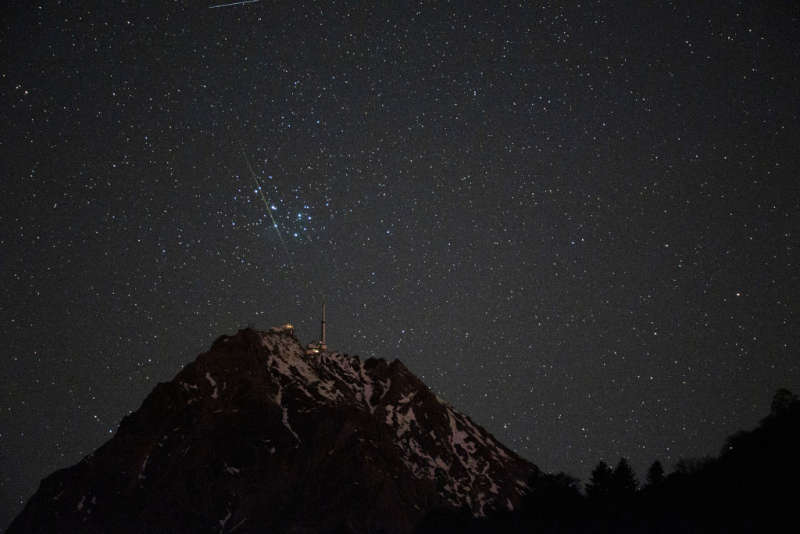
|
Credit & Copyright: Jean-Francois Graffand
Explanation:
Near dawn on November 19
the Pleiades stood in
still dark skies over the French Pyrenees.
But just before sunrise a serendipitous moment was captured in this
single 3 second exposure;
a bright meteor streak appeared to pierce the heart of
the galactic star cluster.
From
the camera's perspective,
star cluster and meteor were poised directly
above the mountain top observatory on the
Pic du Midi de Bigorre.
And though astronomers
might consider
the Pleiades to be relatively close by, the
grain
of dust vaporizing
as it plowed through planet Earth's upper atmosphere
actually missed the cluster's tight grouping of
young stars by about 400 light-years.
While
recording a night sky
timelapse series,
the camera and telephoto lens were fixed to a tripod on
the Tour-de-France-cycled slopes
of the
Col du Tourmalet
about 5 kilometers from the Pic du Midi.
|
January February March April May June July August September October November December |
| ||||||||||||||||||||||||||||||||||||||||||||||||
NASA Web Site Statements, Warnings, and Disclaimers
NASA Official: Jay Norris. Specific rights apply.
A service of: LHEA at NASA / GSFC
& Michigan Tech. U.
Based on Astronomy Picture
Of the Day
Publications with keywords: pleiades
Publications with words: pleiades
See also:
- APOD: 2025 August 25 Á The Meteor and the Star Cluster
- APOD: 2025 July 8 Á The Pleiades in Red and Blue
- APOD: 2025 April 8 Á Moon Visits Sister Stars
- APOD: 2025 March 5 Á Seven Sisters versus California
- APOD: 2025 January 27 Á Pleiades over Half Dome
- APOD: 2024 December 9 Á Pleiades: The Seven Sisters Star Cluster
- APOD: 2024 September 29 Á Seven Dusty Sisters
